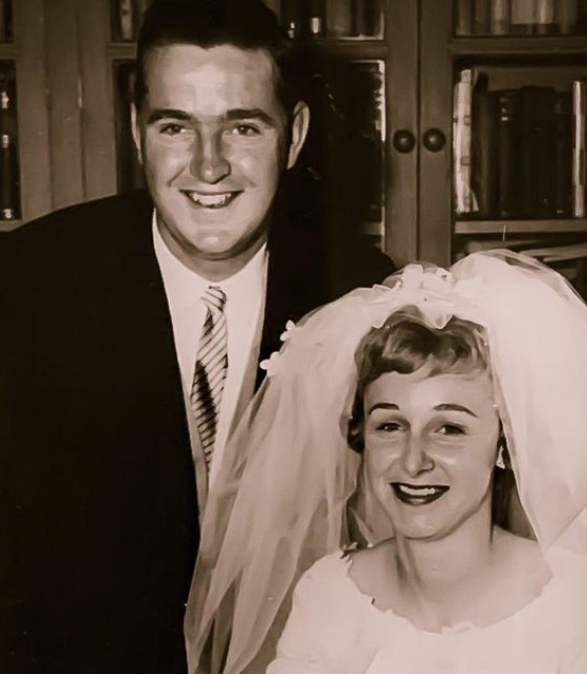Most of the province has moved on, but the pandemic is still taking a deadly toll, claiming hundreds of victims in the last month alone.
Muriel Thompson did everything she could to avoid getting sick with COVID-19.
The 79-year-old from Belleville was undergoing treatment for lymphoma and knew the pandemic put her at risk. She was triple-vaxxed, always wore a mask on her rare trips out of the house and kept within her small family bubble.
But still, the virus found her. Less than a week after testing positive, Muriel died in a hospital intensive care unit on March 22, her body unable to recover from the COVID ravaging her lungs. No friends or family were by her side.

Her son, Dale Thompson, said the disease robbed his mother of the chance to recover from cancer. He wants the public to remember that people — many of them vulnerable like his mom — are still dying of COVID.
“My mom is not the only person COVID has killed this week,” said Thompson. “She is not a statistic. She is a human being. She was supposed to make a comeback, but she never got a chance.”

“I know people want to step on the gas pedal and get on with their lives, but (COVID) is still here, (COVID) still kills people.”
While dropping mask mandates and vaccination passports in Ontario may be a sign the worst of the pandemic is behind us, a steady stream of deaths from COVID-19 — 366 in the last month alone, according to the province’s latest data — is a reminder that the province has yet to escape the deadly virus.
The same week the province removed mandatory masking, Ontario saw 56 COVID deaths including Thompson’s, primarily in people over the age of 60. And in the three weeks since the province ended its proof-of-vaccination program, 329 people have died.
“These people who are dying are not simply numbers. They are loved ones, family members, parents and grandparents, aunts and uncles, neighbours and colleagues,” said Dr. Amit Arya, palliative care lead at Kensington Health who has also witnessed the carnage of the pandemic while working in long-term care.
“If we simply ignore the reality of COVID-19 in our health-care system and in our general population, it will not make it go away. Learning to live with COVID should not mean that we’re surrendering to COVID.”
Earlier this month, the province began breaking down the number of deaths involving COVID into three categories: those in which COVID was the underlying cause; those in which the virus contributed but was not the underlying cause; and those in which the cause of death is unknown or missing.
A Ministry of Health spokesperson told the Star the province updated its reporting to be consistent with how the World Health Organization classifies deaths. The province also removed from its death totals those who had COVID but upon review did not die of the virus — about four per cent of overall fatalities.
Overall, there have been 12,388 deaths involving COVID in Ontario, according to the latest official tally.
While the new breakdown is undoubtedly more granular and helpful for dissecting how the virus kills, or helps to kill, physicians who care for COVID sufferers in their last hours say in practice, the virus’s impact on people near death is more nuanced — especially if patients have other complex medical conditions, such as congestive heart failure, chronic renal failure or dementia.
James Downar, head of the Division of Palliative Care at the University of Ottawa and an intensive care physician at the Ottawa Hospital and Bruyère Continuing Care, said in his experience almost everyone who has died of COVID had a significant underlying comorbidity that is known to raise the risk of death from the virus.
He used the example of someone who has diabetes, obesity and high blood pressure who contracts COVID and dies. In a case like this, he said, none of these conditions would be considered imminently fatal, but the illness would be much worse for the patient because they have a metabolic syndrome.
“The reason the COVID went as badly as it did is because they had a comorbidity. If they didn’t have a comorbidity, it’s probable they would not have died,” Downar said. “The number of perfectly healthy individuals who get COVID and die, that’s a very small number.”
Arya noted that the public should not assume that just because COVID is not considered the primary cause of death, but rather a contributing cause, that it did not play a significant role in a patient’s passing.
“Consider a frail senior prone to infection who contracts COVID and technically recovers, but who is left in a weakened state. Let’s say they develop bacterial pneumonia and die. If you look back at the trajectory, you would see that COVID weakened them so much that it made them prone to getting pneumonia,” he said. “It does not mean that COVID did not contribute to the suffering or the shortening of the life expectancy for that individual.”
Provincial data shows that Ontarians aged 60 and over who are not fully vaccinated have higher rates of death than those who are fully vaccinated in the same age group.
But this data concerns the deaths we know about. Scientists say they believe current official totals are likely an undercount of the true number of people who have died from the virus, due to a lack of surveillance at the beginning of the pandemic and a lack of post-mortem testing on those who die outside the health-care system.
A recent study published in the Lancet that also looked at excess mortality estimates 18.2 million people died worldwide of the disease between Jan. 1, 2020 and Dec. 31, 2021 — much higher than the official 5.94 million reported for that period.
Tara Moriarty, an infectious diseases researcher at the University of Toronto, said she believes it’s a similar situation in Ontario and Canada.
Moriarty co-authored a policy briefing for the Royal Society of Canada Task Force on COVID-19 last year examining excess deaths, COVID fatalities, antibody surveillance and cremation data, to get a better understanding of how many people actually died during the first months of the pandemic. The report found a spike of at-home deaths in 2020. She estimates that, even before Omicron, Ontario probably didn’t report at least a third of its COVID deaths.
“A lot of the missing deaths were probably in-community dwelling seniors who might not have had access to testing, for example, and if they died at home and they weren’t tested, they wouldn’t be reported as a COVID death,” Moriarty added. “And that’s likely the majority of the missing deaths in Ontario right now.”
(With Omicron, even fewer people in Ontario are being tested, as public polymerase chain reaction (PCR) tests are restricted to high-risk people and settings.)
Dr. Sharmistha Mishra, an infectious disease physician and mathematical modeller at St. Michael’s Hospital, a part of Unity Health Toronto, said tracking COVID deaths is critical for understanding the pandemic — and to guide policy changes to help prevent more people from dying.
She and her team have analyzed COVID deaths and hospitalizations and found the disease disproportionately impacts those living in the province’s lowest-income neighbourhoods.
“This suggests our (COVID) interventions are working for higher-income neighbourhoods. But they are not reaching those who live in the lowest-income neighbourhoods,” she said.
This stark trend continued into the fourth and fifth waves and is apparent even when accounting for underlying health conditions, said Mishra, who holds a Canada Research Chair in Mathematical modelling and Program Science.
In Waves 4 and 5, the 20 per cent of the Ontario population who live in the highest-income neighbourhoods died of COVID at half the rate as compared to the 20 per cent of the population who live in the lowest-income neighbourhoods. This is according to data analyzed by Mishra and presented in the Ontario COVID-19 Science Advisory Table’s March 17 update.
“When you look at this data, it begs the question: for whom have we flattened the curve?,” said Mishra, noting access to testing and COVID therapeutics that can be administered out of hospital, such as monoclonal antibodies, is likely more limited for those in the province’s lower-income neighbourhoods, a point public health officials and policy-makers must consider in the months ahead.
“Deaths hold us accountable … in broad strokes they show us that we have continued to leave communities behind in this pandemic.”
For Dale Thompson, the pandemic is far from over. Though mandates have lifted, he plans to continue limiting his contacts and wearing a mask to protect the most vulnerable. He’s still shocked at how easily COVID found — then quickly killed — his mom.
Watching a recent Maple Leafs game on TV was troubling, he said, because so many maskless people were crowded into the stands.
“We’ve lost so many seniors in Ontario because people don’t want to wear a mask or get vaccinated.”
Diagnosed with lymphoma in late 2018, Muriel had undergone radiation and chemotherapy to keep the cancer in check. While she was not in remission at the time of her death, Thompson said his mom was feeling better than she had all winter and that she and her husband, Bill, were looking forward to a summer of walking and gardening together.
While Thompson knows the cancer may have one day killed his mom, he says the grief over her death from COVID is magnified because it happened so swiftly and because she died alone. Since Bill tested positive, he was unable to be with her in hospital. They met at age 16 and were inseparable for almost 64 years.
The family plans to have a celebration of life for Muriel in May, perhaps around Mother’s Day.
“There are so many grieving families out there,” Thompson said. “Those losses can’t be measured; it’s not just a death, it’s someone’s life that is gone.”
“My mom was a vibrant, beautiful person and I refuse to have her lumped in as just a number. I know that feeling is for everyone who has lost people to this disease, too.”
Article From: The Star
Authors: Megan Ogilvie, Kenyon Wallace, May Warren

